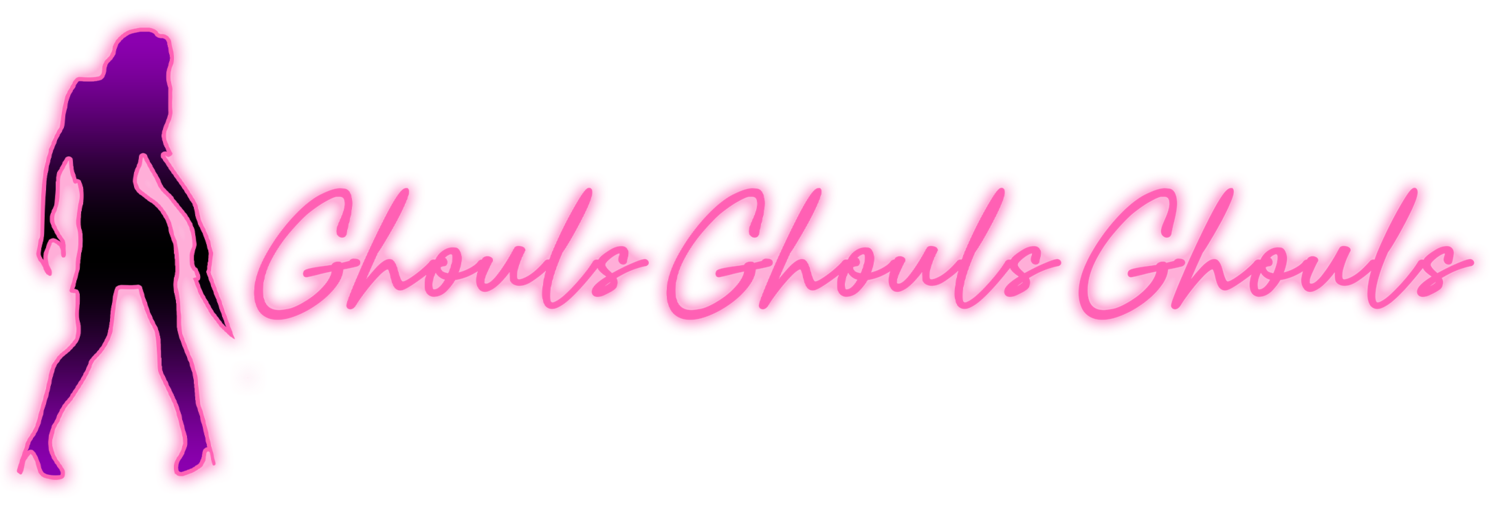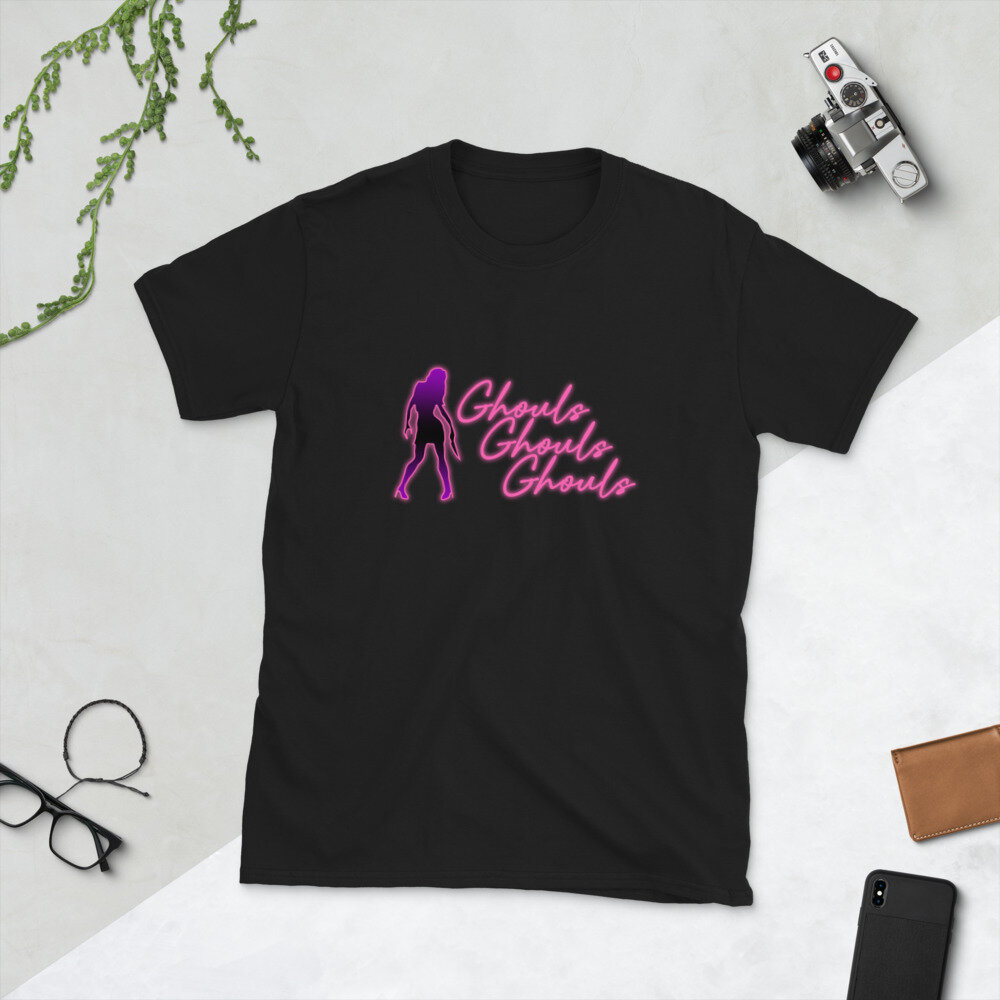[Book Review] Devil House (2022)

Books that you expect will scare you in one way but ultimately end up scaring you in a completely different way are often the most satisfying – and terrifying. John Darnielle's third novel, Devil House, fits into this category perfectly. To indie music fans, Darnielle is known as the singer-songwriter behind The Mountain Goats. His gift for writing has led to a trio of extremely well-written, thoughtful novels – not to mention a nomination for the National Book Award for Fiction.
At first, the story of Devil House seems relatively simple. The perfectly named Gage Chandler is a true crime writer. When his editor suggests that Chandler buy and move into a house where a gruesome double murder took place, he's game. The house is outside San Francisco in Milpitas, a city that was briefly infamous for a terrible reason: the ultimate disaffected teen movie River's Edge (1986) was based on a murder that took place there. The murder Gage is researching in the fictional world of Devil House, however, was never solved.
As Gage acclimates to Milpitas, he becomes more and more committed to recreating the scene of the crime in his new home. The house was actually an adult video store at the time of the crime; the space had known many lives, and when Gage moves in, it seems like it won't be long before the entire structure is demolished. (It's interesting to note that Darnielle's second novel, Universal Harvester, also involves a video store, during the days of VHS tapes. Many fans of horror have fond memories of video stores growing up, and the magical realm of these stores is evoked in both these novels.)
Gage has reached a time in his career when he's wrestling with the ethics of writing true crime. He's quick to point out, "I try to honor the dead in my books. It's one of the things, I hope, that sets me apart a little from my partners in true crime." But he recognizes that he's made a living out of the worst day of other people's lives. The release of Devil House at this moment in history seems fitting. At the same time that the true crime genre is growing more popular (and strangely, more socially acceptable), one must wonder if consuming these stories does anyone any good. This is one of the questions at the heart of the novel.
The novel also asks how we can tell what the truth really is, especially when it comes to true crime and the myths that grow around the most haunting cases. As Gage tells the reader, "There's a considerable distance between the things we're called to bear witness to and the things we'd prefer to see." Not every crime is easy to explain; not every criminal is "bad," and not every victim is "good." Throughout the story, Gage returns to an older case he wrote about, involving two teenagers who break into their teacher's home. In order to defend herself, the teacher stabs them to death with an oyster shucking knife. The myth of the case gradually overtakes the facts of the crime, and Gage gives the myth a name when he calls his true crime book about the murders The White Witch of Morro Bay. It's easy for local kids to pass around this legend, but the truth of what led the teacher and her pupils to their devastating ends is much more complex.
There are other more insidious horrors seeping through the pages of Devil House. In Darnielle's story (or stories – the novel sprawls in several mind-bending directions and eventually comes to an unforgettable conclusion), there are only gray areas. It's an idea Gage seems aware of at the beginning of his journey, but he seems to only fully absorb it after spending years investigating the double murder, living at the crime scene and having a visitor or two from his own past resurface in his life again. Reading Devil House is like putting on 3D glasses after living in a 2D world; it doesn't answer many questions, but it certainly brings up enough to haunt readers for a long time after Gage's story comes to an end

In the late seventies and early eighties, one man was considered the curator of all things gore in America. During the lovingly named splatter decade, Tom Savini worked on masterpieces of blood and viscera like Dawn of the Dead (1978), a film which gained the attention of hopeful director William Lustig, a man only known for making pornography before his step into horror.
When people think of horror films, slashers are often the first thing that comes to mind. The sub-genres also spawned a wealth of horror icons: Freddy, Jason, Michael, Chucky - characters so recognisable we’re on first name terms with them. In many ways the slasher distills the genre down to some of its fundamental parts - fear, violence and murder.
Body horror is one of the fundamental pillars of the horror genre and crops up in some form or another in a huge variety of works. There's straightforward gore - the inherent horror of seeing the body mutilated, and also more nuanced fears.
Even though they are not to my personal liking, there is no denying that slasher films have been an important basis for the horror genre, and helped to build the foundations for other sub-genres throughout the years.
I can sometimes go months without having a panic attack. Unfortunately, this means that when they do happen, they often feel like they come out of nowhere. They can come on so fast and hard it’s like being hit by a bus, my breath escapes my body, and I can’t get it back.
On Saturday, 17th June 2023, I sat down with two friends to watch The Human Centipede (First Sequence) (2009) and The Human Centipede 2 (Full Sequence) (2012). I was nervous to be grossed out (I can’t really handle the idea of eating shit) but excited to cross these two films off my list.
But some of the most terrifying horrors are those that take place entirely under the skin, where the mind is the location of the fear. Psychological horror has the power to unsettle by calling into question the basis of the self - one's own brain.
Throughout September we were looking at slasher films, and therefore we decided to cover a slasher film that could be considered as an underrated gem in the horror genre. And the perfect film for this was Franck Khalfoun’s 2012 remake of MANIAC.
Looking for some different slasher film recommendations? Then look no fruther as Ariel Powers-Schaub has 13 non-typical slasher horror films for you to watch.

RELATED ARTICLES
Bora Chung’s bizarre and queasy short stories were nominated for the 2022 International Booker Prize and it’s no surprise why.
Penance is Eliza Clark’s eagerly awaited second novel following her debut Boy Parts, which found much love and notoriety in online reading circles.
However Nat Segaloff’s book The Exorcist Legacy: 50 Years of Fear is a surprising and fascinating literary documentation of the movie that caused moviegoers to faint and vomit in the aisles of the cinema.
Hear Us Scream Vol II is a collection of over thirty essays from horror writers, scholars and fanatics. Touching on topics ranging from the monster within, to family values and reclaiming our bodies through horror, this is a deeply personal collection. Every contribution is meticulously crafted and edited, with care and insight into the film and genre being discussed.
It's fitting that Elizabeth Hand's novel Wylding Hall (2015) won the Shirley Jackson Award; her writing echoes and pays homage to the subtle scariness and psychological horror of Shirley Jackson's works.
Moïra Fowley’s debut adult work is a shapeshifting and arresting short story collection which looks at the queer female body through experiences both horrific and sensual.
Gretchen Felker-Martin’s Manhunt, a novel that holds both horror and heart in equal regard, a biting and brilliant debut from one of horror-fiction’s most exciting names.
A girl stands with her back to the viewer, quietly defiant in her youthful blue-and-white print dress, which blends in with a matching background
Happily, her new anthology The Book of Queer Saints Volume II is being released this October. With this new collection, queer horror takes center stage.
Nineteen Claws And A Black Bird packs in plenty of sublime and disturbing short stories across its collection.

EXPLORE
If you know me at all, you know that I love, as many people do, the work of Nic Cage. Live by the Cage, die by the Cage. So, when the opportunity to review this came up, I jumped at it.
When V/H/S first hit our screens in 2012, nobody could have foreseen that 11 years later we’d be on our sixth instalment (excluding the two spinoffs) of the series.
When someone is in a toxic relationship, it can affect more than just their heart and mind. Their bodies can weaken or change due to the continued stress and unhappiness that comes from the toxicity.
If you can’t count on your best friend to check your teeth and hands and stand vigil with you all night to make sure you don’t wolf out, who can you count on? And so begins our story on anything but an ordinary night in 1993…
The best thing about urban legends is the delicious thrill of the forbidden. Don’t say “Bloody Mary” in the mirror three times in a dark room unless you’re brave enough to summon her. Don’t flash your headlights at a car unless you want to have them drive you to your death.
A Wounded Fawn (Travis Stevens, 2022) celebrates both art history and female rage in this surreal take on the slasher genre.
Perpetrator opens with a girl walking alone in the dark. Her hair is long and loose just begging to be yanked back and her bright clothes—a blood red coat, in fact—is a literal matador’s cape for anything that lies beyond the beam of her phone screen.
Filmed on location in Scotland, Ryan Hendrick's new thriller Mercy Falls (2023) uses soaring views of the Scottish Highlands to show that the natural world can either provide shelter or be used as a demented playground for people to hurt each other.


![[Editorial] If Looks Could Kill: Tom Savini’s Practical Effects in Maniac (1980)](https://images.squarespace-cdn.com/content/v1/5fe76a518d20536a3fbd7246/1694952175495-WTKWRE3TYDARDJCJBO9V/Screenshot+2023-09-17+at+12.57.55.png)
![[Editorial] 5 Slasher Short Horror Films](https://images.squarespace-cdn.com/content/v1/5fe76a518d20536a3fbd7246/1696358009946-N8MEV989O1PAHUYYMAWK/Screenshot+2023-10-03+at+19.33.19.png)
![[Editorial] 8 Body Horror Short films](https://images.squarespace-cdn.com/content/v1/5fe76a518d20536a3fbd7246/1690838270920-HWA5RSA57QYXJ5Y8RT2X/Screenshot+2023-07-31+at+22.16.28.png)
![[Editorial] Editor’s Note: Making a slash back into September](https://images.squarespace-cdn.com/content/v1/5fe76a518d20536a3fbd7246/1694354202849-UZE538XIF4KW0KHCNTWS/MV5BMTk0NTk2Mzg1Ml5BMl5BanBnXkFtZTcwMDU2NTA4Nw%40%40._V1_.jpg)
![[Editorial] “I control my life, not you!”: Living with Generalised Anxiety Disorder and the catharsis of the Final Destination franchise](https://images.squarespace-cdn.com/content/v1/5fe76a518d20536a3fbd7246/1696444478023-O3UXJCSZ4STJOH61TKNG/Screenshot+2023-10-04+at+19.30.37.png)
![[Editorial] Eat Shit and Die: Watching The Human Centipede (2009) in Post-Roe America ](https://images.squarespace-cdn.com/content/v1/5fe76a518d20536a3fbd7246/1691245606758-4W9NZWE9VZPRV697KH5U/human_centipede_first_sequence.original.jpg)
![[Editorial] 8 Mind Horror Short films](https://images.squarespace-cdn.com/content/v1/5fe76a518d20536a3fbd7246/1693504844681-VPU4QKVYC159AA81EPOW/Screenshot+2023-08-31+at+19.00.36.png)
![[Ghouls Podcast] Maniac (2012) with Zoë Rose Smith and Iona Smith](https://images.squarespace-cdn.com/content/v1/5fe76a518d20536a3fbd7246/1696356006789-NYTG9N3IXCW9ZTIJPLX2/maniac.jpg)
![[Editorial] Deeper Cuts: 13 Non-Typical Slashers](https://images.squarespace-cdn.com/content/v1/5fe76a518d20536a3fbd7246/1694951568990-C37K3Z3TZ5SZFIF7GCGY/Curtains-1983-Lesleh-Donaldson.jpg)
![[Book Review] Cursed Bunny (2017)](https://images.squarespace-cdn.com/content/v1/5fe76a518d20536a3fbd7246/1680266256479-2E2XJT4T8CGAMOUB7XAL/298618053_5552736738082400_5168089788506882676_n.jpg)
![[Book Review] Penance (2023) by Eliza Clark](https://images.squarespace-cdn.com/content/v1/5fe76a518d20536a3fbd7246/1695481011772-L4DNTNPSHLG2BQ69CZC1/Screenshot+2023-09-23+at+15.54.07.png)
![[Book Review] The Exorcist Legacy: 50 Years of Fear](https://images.squarespace-cdn.com/content/v1/5fe76a518d20536a3fbd7246/1691328003764-IASXC6UJB2B3JCDQUVGP/61q9oHE0ddL._AC_UF1000%2C1000_QL80_.jpg)
![[Book Review] Hear Us Scream Vol II](https://images.squarespace-cdn.com/content/v1/5fe76a518d20536a3fbd7246/1667055587557-4AIJTAG4N5VUZE8AC0SF/FrontCoverMarinaCollings.png)
![[Book Review] Wylding Hall (2015)](https://images.squarespace-cdn.com/content/v1/5fe76a518d20536a3fbd7246/1695484930026-PFRK7O26SLME4JIC49EW/Screenshot+2023-09-23+at+16.59.04.png)
![[Book Review] Eyes Guts Throat Bones (2023)](https://images.squarespace-cdn.com/content/v1/5fe76a518d20536a3fbd7246/1682344253308-4AAFX12YD84EVJBYNJBZ/7e617654-8d9e-407e-8cde-33a97df84dcf.__CR0%2C0%2C970%2C600_PT0_SX970_V1___.jpg)
![[Book Review] Manhunt (2022)](https://images.squarespace-cdn.com/content/v1/5fe76a518d20536a3fbd7246/1683911513884-1Q1IGIU9O5X5BTLBXHV9/53329296._UY630_SR1200%2C630_.jpg)
![[Book Review] The Aosawa Murders (2020)](https://images.squarespace-cdn.com/content/v1/5fe76a518d20536a3fbd7246/1678009096264-7QOOFO5PI9LAX47L3GF6/51054767.jpg)
![[Book Review] The Book of Queer Saints Volume II (2023)](https://images.squarespace-cdn.com/content/v1/5fe76a518d20536a3fbd7246/1697187383073-U78VOF5WVDHI9YE8M98A/Screenshot+2023-10-13+at+09.52.31.png)
![[Book Review] Nineteen Claws And A Black Bird (2020)](https://images.squarespace-cdn.com/content/v1/5fe76a518d20536a3fbd7246/1685872305328-UE9QXAELX0P9YLROCOJU/62919399._UY630_SR1200%2C630_.jpg)












![[Film Review] Sympathy for the Devil (2023)](https://images.squarespace-cdn.com/content/v1/5fe76a518d20536a3fbd7246/1697186986143-QDVLQZH6517LLST682T8/Screenshot+2023-10-13+at+09.48.52.png)
![[Film Review] V/H/S/85 (2023)](https://images.squarespace-cdn.com/content/v1/5fe76a518d20536a3fbd7246/1697455043249-K64FG0QFAFVOMFHFSECM/MV5BMDVkYmNlNDMtNGQwMS00OThjLTlhZjctZWQ5MzFkZWQxNjY3XkEyXkFqcGdeQXVyMTUzMTg2ODkz._V1_.jpg)
![[Film Review] Kill Your Lover (2023)](https://images.squarespace-cdn.com/content/v1/5fe76a518d20536a3fbd7246/1697465940337-T55VQJWAN4CHHJMXLK32/56_PAIGE_GILMOUR_DAKOTA_HALLWAY_CONFRONTATION.png)
![[Film Review] Shaky Shivers (2022)](https://images.squarespace-cdn.com/content/v1/5fe76a518d20536a3fbd7246/1696442594997-XMJSOKZ9G63TBO8QW47O/Screenshot+2023-10-04+at+18.59.33.png)
![[Film Review] Elevator Game (2023)](https://images.squarespace-cdn.com/content/v1/5fe76a518d20536a3fbd7246/1696440997551-MEV0YZSC7A7GW4UXM5FT/Screenshot+2023-10-04+at+18.31.42.png)
![[Film Review] A Wounded Fawn (2022)](https://images.squarespace-cdn.com/content/v1/5fe76a518d20536a3fbd7246/1695484054446-7R9YKPA0L5ZBHJH4M8BL/Screenshot+2023-09-23+at+16.42.24.png)
![[Film Review] Perpetrator (2023)](https://images.squarespace-cdn.com/content/v1/5fe76a518d20536a3fbd7246/1695483561785-VT1MZOMRR7Z1HJODF6H0/Screenshot+2023-09-23+at+16.32.55.png)
![[Film Review] Mercy Falls (2023)](https://images.squarespace-cdn.com/content/v1/5fe76a518d20536a3fbd7246/1695482997293-E97CW9IABZHT2CPWAJRP/Screenshot+2023-09-23+at+16.27.27.png)

Many of the most effective horror films involve blurring the lines between waking life and a nightmare. When women in horror are emotionally and psychologically manipulated – whether by other people or more malicious supernatural forces – viewers are pulled into their inner worlds, often left with a chilling unease and the question of where reality ends and the horror begins.